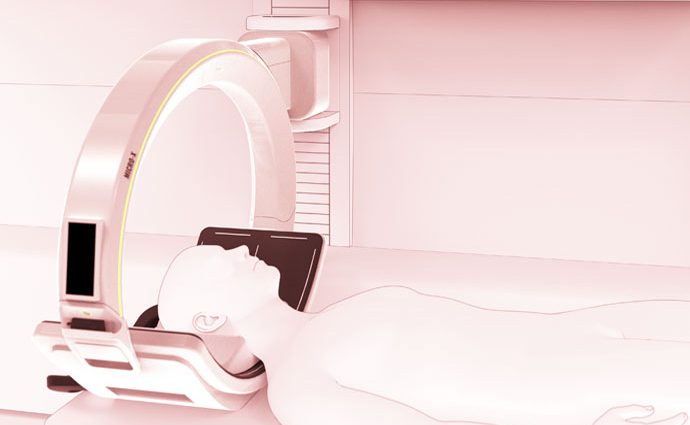A lightweight mobile CT scanner small enough to fit into standard ambulances, has been designed and developed by Monash University in partnership with Micro-X and could provide faster stroke diagnosis at the point of care.
Stroke is a leading cause of death and long-term disability in Australia and the second highest cause of death globally. Treatment of stroke is time critical, with the “golden hour” the vital time window after stroke onset for receiving diagnosis and treatment to give patients the best chance of survival and recovery.
The introduction of a small CT scanner into ambulances would ensure the appropriate treatment can be provided earlier, improving patient outcomes and reducing long-term healthcare costs.
Micro-X’s ‘Ring Scanner’ technology aims to provide comparable diagnostic imaging to a conventional head CT scanner in a unit intentionally designed to be small enough and at a price point where one can be fitted in every ambulance.
The ‘Ring Scanner’ will also be light enough to be deployed in fixed or rotary wing air ambulances.
Dr Nyein Chan Aung, Senior Design Research Officer, Monash Design Health Collab part of the Faculty of Art Design & Architecture, Monash University is designing the Mobile CT scanner in partnership with Micro-X, an Adelaide based company working as part of the Australian Stroke Alliance.
“The lightweight and compact design of the stroke imager will change the way we respond to stroke emergencies by allowing medical professionals to image, diagnose and treat faster than ever,” Dr Aung said.
“It will also significantly help increase the prevalence of mobile stroke units in Australia and around the world. We believe the scanner will improve the outcomes of stroke patients significantly.
“Design is the interface between technology and the user. The Monash Design Health Collab team is using design research methods to understand the user behaviour of medical professionals profoundly and to respond with design interventions that will streamline the usability of our mobile stroke imaging technology – down to the second.”
Micro-X, a member of the Australian Stroke Alliance, led by clinical specialists from the Royal Melbourne Hospital, has been successful in conducting a feasibility phase on their ‘Ring Scanner’ concept with stage 1 funding. The alliance is now pitching for a share of the Frontier Health and Medical Research initiative funded by the Federal Government Medical Research Future Fund to bring this product to market.
“Micro-X is thrilled to be part of the Stroke Alliance’s bid to revolutionise stroke treatment. As a successful manufacturer of innovative health imaging technology, we are committed to turning bold ideas into global impact,” Peter Rowland, Managing Director of Micro-X said.
“We believe so much in this project and have invested in research and global partnerships to ensure we can develop high-quality brain images that detect small brain bleeds – all packaged in a device that can be fitted into any ambulance or aircraft.
“Winning the next stage of funding for this exciting project will not only improve the health outcomes of thousands of Australians, but also have an enormous economic benefit through job creation in manufacturing and research development.”
Monash University and Micro-X are seeking further funding to develop the ‘Ring Scanner’. The Australian Stroke Alliance includes experts from health and academic institutes and charities, including the Royal Melbourne Hospital, University of Melbourne, Ambulance Victoria, Stroke Foundation and Royal Flying Doctors Service.
Similar Posts by The Author:
- Narendra Modi at the 16th BRICS Summit, meets Putin, Xi Jinping
- Diwali 2024 : Celebrate India Inc. brings 19th Fed Square Diwali on October 26
- Racism rears its ugly head during council elections, as Jamel Kaur Singh & others found out
- $400 School Saving Bonus will help busy Victorian families
- Aussie Indian Alexis Dennis opens up on racism in Australia

